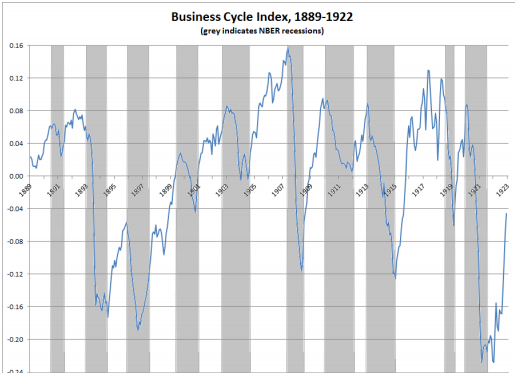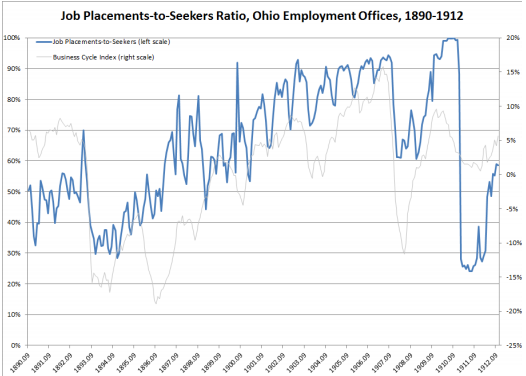The Success of Employment Applications in Ohio during the Gentleman's Recession
On April 18, 1906, a 7.9 earthquake hit San Francisco, California. The death total rom the earthquake and associated fires and mud slides is estimated to have been 3,000. As many as 300,000 people, out of a population of 400,000, were made homeless. Property damage amounted to $400 million, $250 million of which was covered by insurance.
With such an enormous claim upon the insurance industry, insurance companies and the entire financial system were subjected to enormous stress. The following year, the Panic of 1907 broke out.
Stock prices tumbled. Banks were closed. And, an industrial recession got underway. Fortunately, J.P. Morgan and others stepped in to support stock prices; and, banks issued $100 million of scrip (or, emergency money). And, the recession was shortYlived. Indeed, for a time, this recession was called The Gentlemen's Recession, as it was said to have mostly affected investors and did not much affect those in the working class.

The chart above shows an index of the business cycle during the period.
It is relatively easy to see the sharp fall in the index during the recession that followed the Panic of 1907. It is also relatively easy to see the sharp recovery from this recession.
During the period, the State of Ohio operated employment offices in five cities. From their reports, monthly time series can be constructed for job applications, job listings and job placements, for men and for women, for each of the five cities, from Sept. 1890 to Oct. 1912.
These employment offices focused on inexperienced and unskilled workers, and difficult to place individuals.

The above chart displays the ratio of job placements to seekers, for the total of men and women in all five cities, juxtaposed against the business cycle indicators. Two things should stand out:
First, there is a strong upward trend the ratio through 1910. After that, there is a sharp decline. This decline, it turns out, is due to an administrative change involving the differentiation of registered from not registered job applicants. Accordingly, the data following 1910 are not directly comparable to the data through 1910.
Second, through 1910, there appears to be a weak, positive correlation between the ratio and the business cycle index. In particular, the ratio dips during the recession that followed the Panic of 1893 and it dipped again during the recession that followed the Panic of 1907.
In this assignment, you are to:
• Use the data in the accompanying spreadsheet, for the period Sept. 1890 to Dec. 1910, to estimate a multiple regression in which the dependent variable is the ratio of job placements to job seekers for your city and demographic group (which you can obtain in the Gradebook), and the independent variables are (1) time and (2) the business cycle index.
• Use the regression output to comment on (1) whether the ratio is affected by the business cycle;
(2) whether the ratio is particularly sensitive to the business cycle (affected by more than 1YtoY1); and, (3) whether the ratio fell by at least as much as would be predicted following the Panic of 1907.